2019.03.29Field Report
Being a Part of the "AKARI" Bringing Light to People Project, Report by Volunteer Employee Reporters
2013.11.07 Field Report
In September 2013, we visited a temple school in rural area with the Greater Mekong Initiative, an NPO that supports temple schools, to test the new solar lanterns. Akira Hoshi reports.
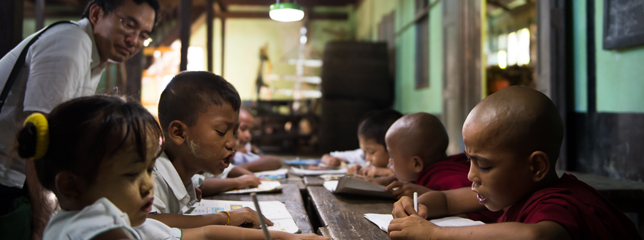
Hello, this is Akira Hoshi reporting from the CSR & Citizenship Group.
Panasonic donated a total of 3,000 compact solar lights to four partner organizations active in Myanmar in February, 2013.
This inspection aimed to have the people living in such areas experiment with the new solar lanterns planned for launch this December and get their feedback on them. I set off to the region in which the Greater Mekong Initiative (GMI) works to support temple schools.
Myanmar was long under the rule of the military until recently. Although rapid economic growth continues as the country is democratized and the electrical infrastructure is gradually being established, many people still have a low standard of living and large areas remain without electricity.
This inspection aimed to have the people living in such areas experiment with the new solar lanterns planned for launch in December and get their feedback on them. I set off to the region in which the Greater Mekong Initiative (GMI) works to support temple schools.
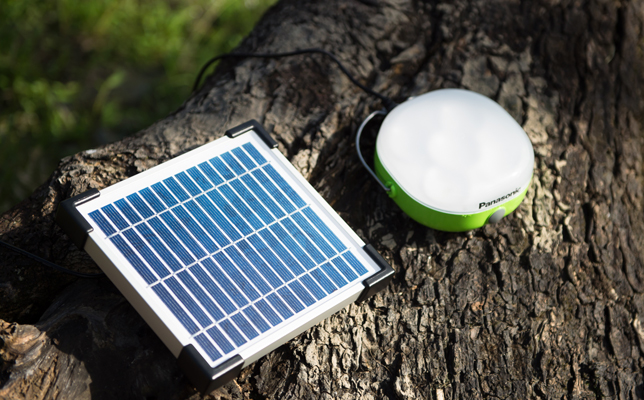
The new solar lantern we tested
Myanmar was long under the rule of the military until recently. Although rapid economic growth continues as the country is democratized and the electrical infrastructure is gradually being established, many people still have a low standard of living, and large areas remain without electricity.
This is my third visit. My impression of Myanmar is that the people living in poverty were not dispirited, but cheerful.
Back when I visited Cambodia in the dry season, the fields were barren and the earth was dry, which gave the land a very severe appearance.
In contrast, the beautiful scenery in the rural district blows me away in Myanmar. The green paddy fields extend across the land, dotted with groves and houses. Provided with fish and rice from nature, the people are not starving.
What's more, thanks to the temple schools, everyone can get an education and learn basic math and how to read and write, even if they are poor. The schools also emphasize religious education and are meticulous in their moral teachings. I felt that while there is poverty in life in Myanmar, there is also an aspect of abundance.
*Please see the interview with Mr. Yoshio Iwaki, the Vice-President of GMI, for more on the conditions of temple schools in Myanmar.
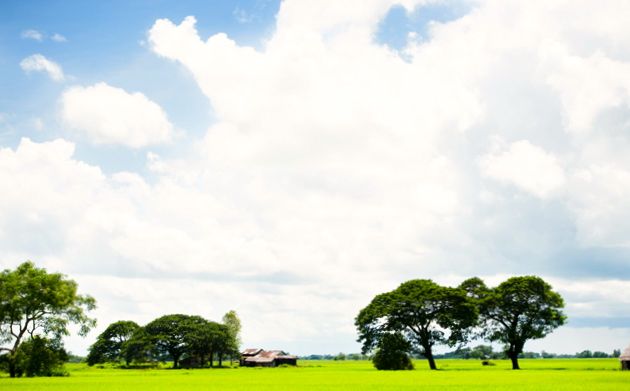
The beautiful rural landscape of Myanmar
However, when I visited a family living without electricity, their way of life was in fact more austere than it seemed. I learned that insufficient light imposes many restrictions on their lifestyle and the children's education.
I visited a village in the delta area of Yangon region. The bumpy road from Yangon City to the village takes about three hours by car, and was only opened recently. Until then, people had apparently used boats to travel between the village and Yangon on the waterways.
I stopped by to visit a family living close to the entrance of the village, which is not connected to the power grid. They showed me their way of life.
Being tenant farmers, they earn an income by farming under the landlord, and since they cannot afford to send their children to a public school, they attend a free temple school. They keep pigs in the house, and the sanitary situation was not exactly ideal. Not much light enters the house--even in the afternoon--and they use a kerosene lamp.
Seeing their way of life with my own eyes strengthened my resolution to contribute as much as possible to the improvement of life here using the solar lanterns.

The seven-person family spoke to me cheerfully.
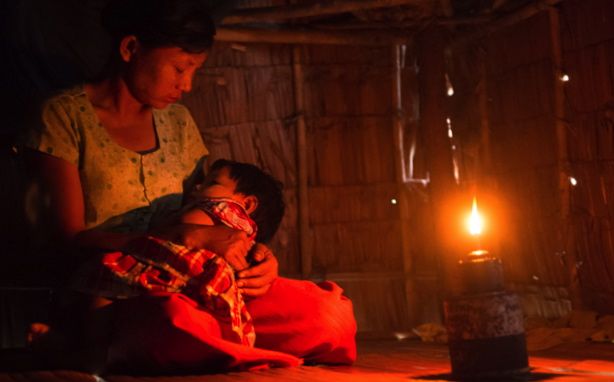
Poor families use kerosene lamps in both electrified and non-electrified regions.
I visited the temple school in the village to test the new solar lanterns. This temple school has about 280 pupils. It also has a school building donated by Ms. Akie Abe, a GMI adviser and the wife of the current Japan's Prime Minister.
The temple school has electricity, but it is not enough because power outages frequently occur, and the rooms are gloomy even in the afternoon on sunny days as the building is large in size and has high ceilings. Lights are necessary for the pupils to study.
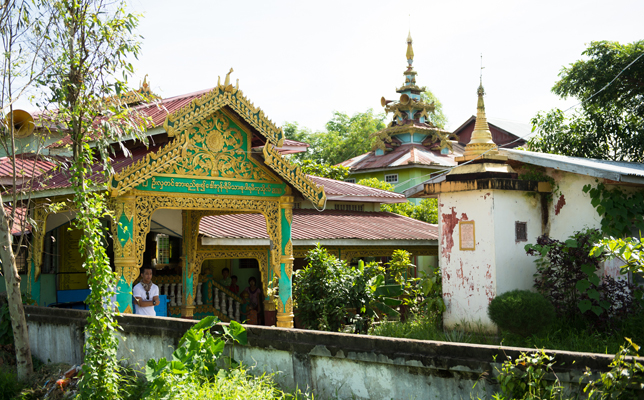
The temple that runs the school I visited on the inspection
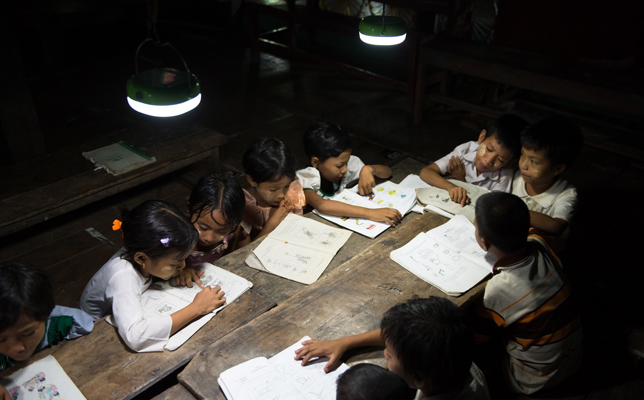
Three new solar lanterns provided enough light to study.
During the visit, the teachers actually gave a lesson using the new solar lanterns. The new lanterns are very bright and incorporate various improvements suggested by the users, including being able to suspend them from the ceiling and 360 degrees of illumination.
On the second day of the inspection, there was a thunderstorm. The windows of the temple school do not have any glass, and can only be closed with wooden boards when the rain is heavy. In which case, the room becomes pitch black.
When we hung three of the new solar lanterns from the ceiling, they cast enough light to illuminate a large desk properly. They told me that it would greatly facilitate their studies.
The new solar lanterns achieve a ground-breaking brightness of 100 lux. Actually testing them in the locations where they will be used, I felt convinced that all of the improved functions could match exactly what people want.
On this observation trip I reaffirmed my commitment to deliver the new solar lanterns that meet local needs so well to the people who really need them to improve the quality of life in the area.